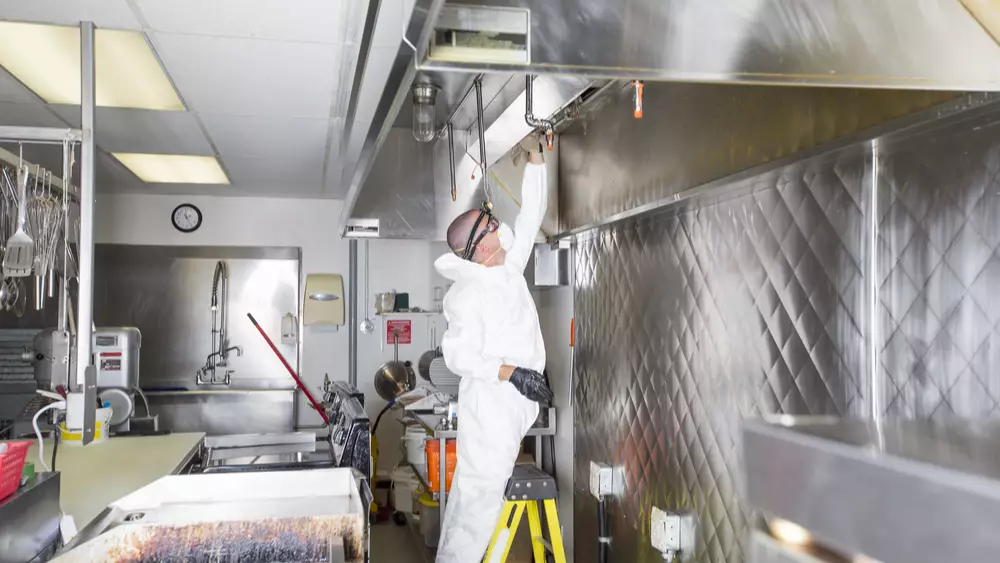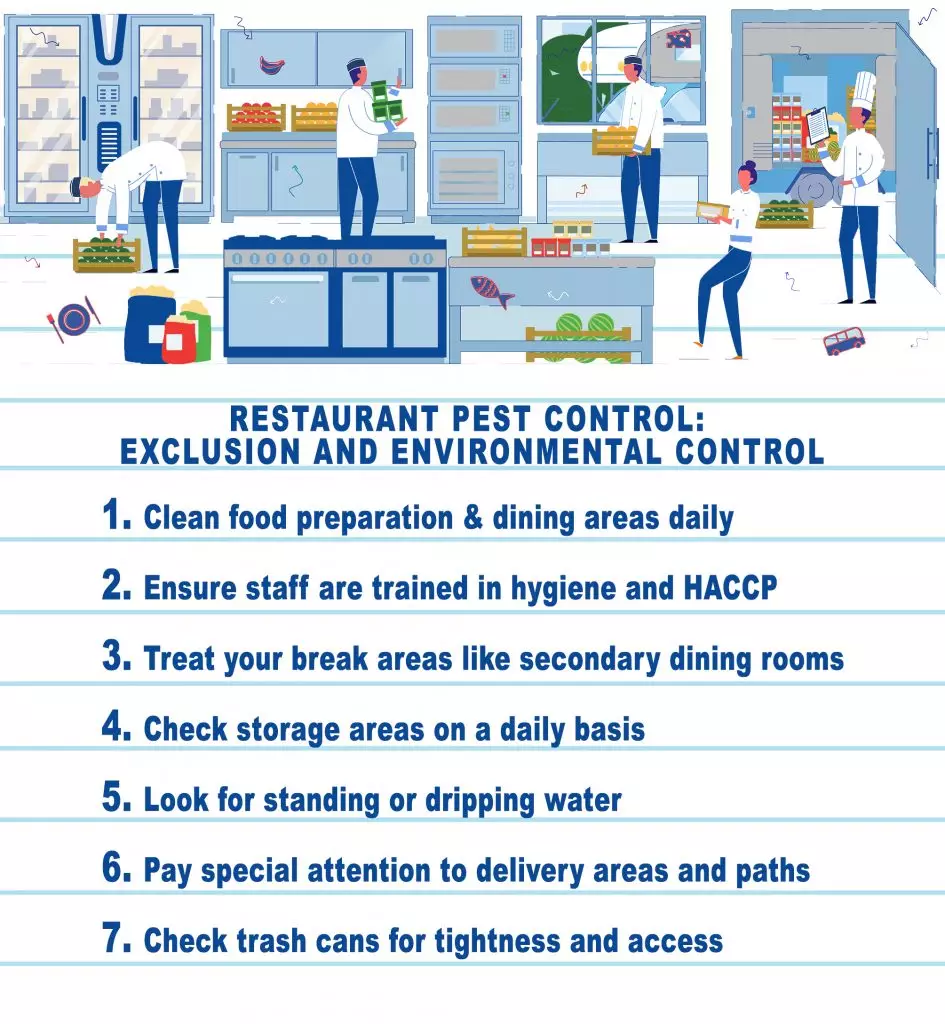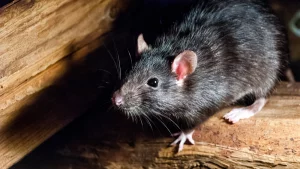
Food service is one of the most challenging industries for successful pest management—the combination of heavy foot traffic, food preparation, and movement make it extremely difficult to minimize sources of aggravation. However, with solid restaurant pest control procedures and employee buy-in, it can be possible to reduce the impact of pests and keep the premises looking as appealing as the dishes served.
Exclusion and Environmental Control
The most common three pests in South Florida restaurants are flies, cockroaches, and rodents. While they are different in terms of size and effect, they share commonalities in prevention. If you eliminate food and water supplies and block ingress points, pests will have no reason to be in your establishment and will not return.
This combination is known as exclusion and environmental control, and no system of pest control procedures is possible without it. Below are some daily steps that you can take to maximize protection against pests:
- Clean food preparation and dining areas daily – Pay special attention to the corners of rooms and around the bottoms of tables. These are areas where crumbs and remainders can collect and attract insects and rodents, especially if you have an outdoor dining area.
- Ensure staff are trained in food prep hygiene – There are numerous certification programs available to restaurant employees and ensuring that yours have access to this training whether it’s from ServSafe, NEHA, NRFSP or a similar organization is crucial.
- Treat your break areas like secondary dining rooms – Many restaurant staff still go outside for breaks in addition to using whatever common areas may be available to them. Assigning someone to keep track of these areas is important because they are often not included in cleaning schedules.
- Check storage areas on a daily, or every-other-day basis – Dry storage areas can quickly become “pest pastures” if a container has sprung a small leak. While performing an inspection, make sure to check expiration dates as dry food that has gone bad can become more attractive to pests.
- Look for standing or dripping water – A leaky faucet or a poorly-functioning refrigerator with excessive condensation will provide ample opportunity for roaches or mosquitoes. Ensure you have ways to clean and mop dripping areas and consider making repairs if you have the budget for it.
- Pay special attention to delivery areas and paths – Deliveries are difficult to manage in terms of pest control as you don’t often have a way to ensure proper handling, and things can easily slip off a hand truck creating spills and a food source for pests. Delivery personnel also tend to mess up any exclusion techniques you may have set up, such as door sweeps, sealed food preparation areas, or spills that aren’t cleaned up right away.
- Check trash cans for tightness and access – Trash cans are a major area of concern for restaurants. Try to keep them and dumpsters as far from the dining area as possible. In addition, provide enough bags and other materials so that staff will be unlikely to haphazardly clean up spills if a leak or break in a bag occurs. Cleaning outside alleys can be difficult, and once pests have found a home in a dumpster, it’s very easy for them to make the quick trip inside your restaurant.
Even with the best possible cleaning techniques and exclusion methods, you may still see signs of potential pests. They’re crafty in South Florida.

Restaurant Pest Control Procedures: Identifying and Treating Signs of Pests
Having a public health officer close down your restaurant not only takes your business out of service but also can immeasurably damage your reputation. At first sight of any potential pest intrusion, you and a professional should take the following steps:
- Try to track the problem down to the source – To take one example, if you have roaches in a section of the kitchen, you’ve only identified their food supply. They will have a nest somewhere else that needs treatment as well. See if you can follow their path back to this area.
- Identify gaps in your pest management plan – Did staff leave the back door cracked after their break with an open path to the kitchen? Did a delivery include a spill that no one noticed? Preventing future problems while you have an existing one is part of an integrated pest management plan.
- Determine your treatment plan – Working with commercial service providers for restaurant pest control ensures the best possible outcome. If you are trying to just “knock down” visible pests with sprays or similar treatments, you not only aren’t treating the source of your problem, you might be making it worse. Finding baiting options that are safe for the areas where you need to place them is one option.
The other option that guarantees the best odds of success is to work with a commercial pest control service that can provide maximum protection while examining areas of concern at your dining facility. An experienced pest management professional can identify signs of potential infestation, paths of entry into your restaurant and work with you and staff to develop a comprehensive, ongoing plan to keep rodents, insects, and other pests from establishing their presence.
Get Effective Commercial Pest Control From Nozzle Nolen
If you do not have a restaurant pest control procedure plan in place, and you believe your restaurant has a pest problem, or you are facing an active infestation, it is critical to get the help you need before the worst-case scenario becomes a reality.
Nozzle Nolen provides comprehensive pest management solutions for South Florida restaurants of every size and type. Call us at 800.226.6536 or Contact Us for a custom quote. We look forward to serving you.

